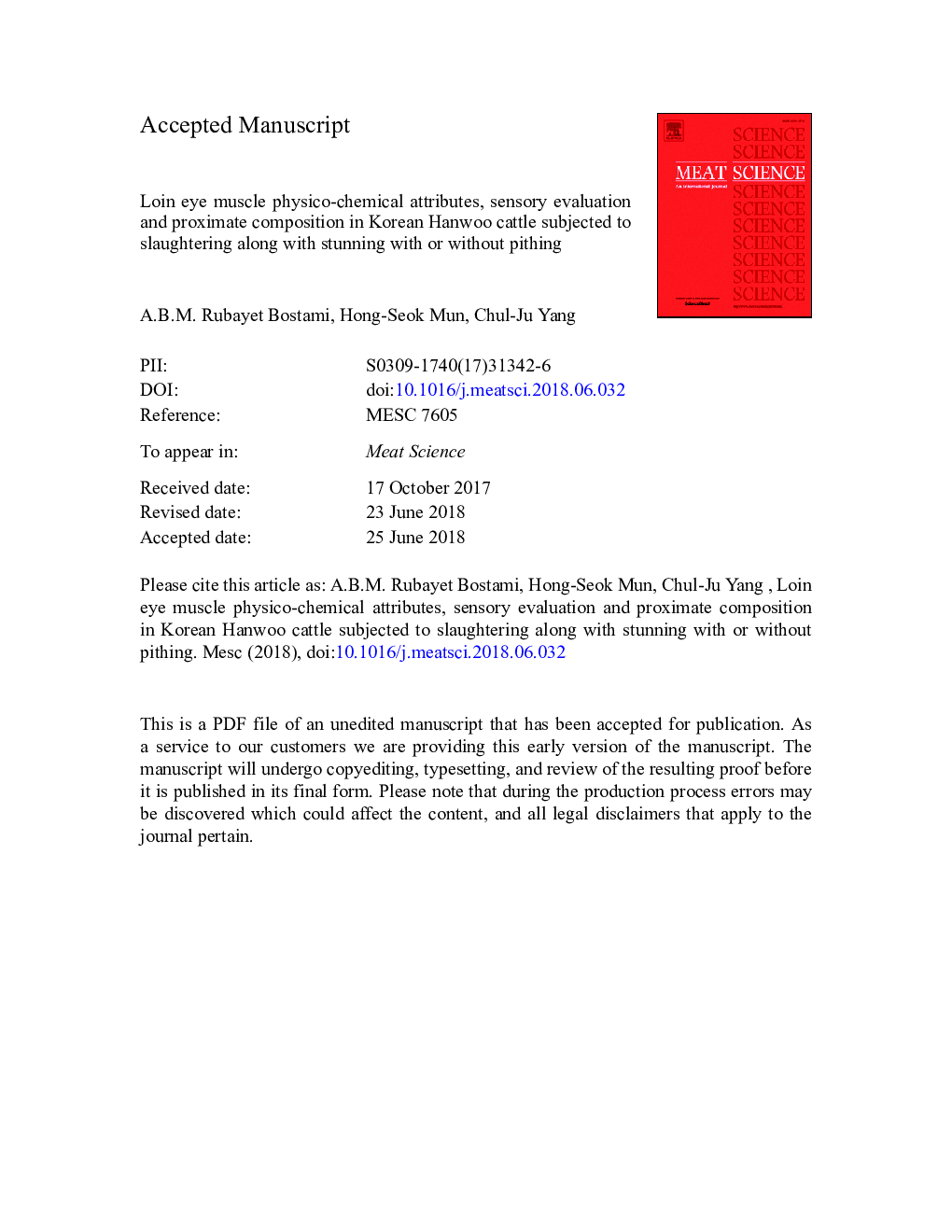| Article ID | Journal | Published Year | Pages | File Type |
|---|---|---|---|---|
| 8502414 | Meat Science | 2018 | 38 Pages |
Abstract
Korean Hanwoo Cattle (KHC) were utilized to compare existing and modified methods of slaughtering. Carcass traits, loin eye muscle color coordination, physico-chemical attributes, sensory evaluation and proximate composition were assessed. Twelve KHC were slaughtered following 1) CSNHS: non-halal way neck cutting as following captive bolt stunning with pithing and 2) CSHS: halal way neck cutting as following captive bolt stunning without pithing. Loin eye muscle color coordination, physico-chemical attributes and sensory evaluation did not differ significantly subjected to slaughter types (Pâ¯>â¯0.05). However, loin eye muscle crude ash content was higher in CSHS group relative to CSNHS (Pâ¯<â¯0.05). Pearson's correlation analysis indicated that several traits were affected by slaughter types. Overall, CSHS ensures no negative impact on meat yield and qualitative traits rather led a higher loin eye muscle crude ash content. Therefore, CSHS could be adopted in Korean slaughterhouses with modification of existing practice.
Related Topics
Life Sciences
Agricultural and Biological Sciences
Food Science
Authors
A.B.M. Rubayet Bostami, Hong-Seok Mun, Chul-Ju Yang,
